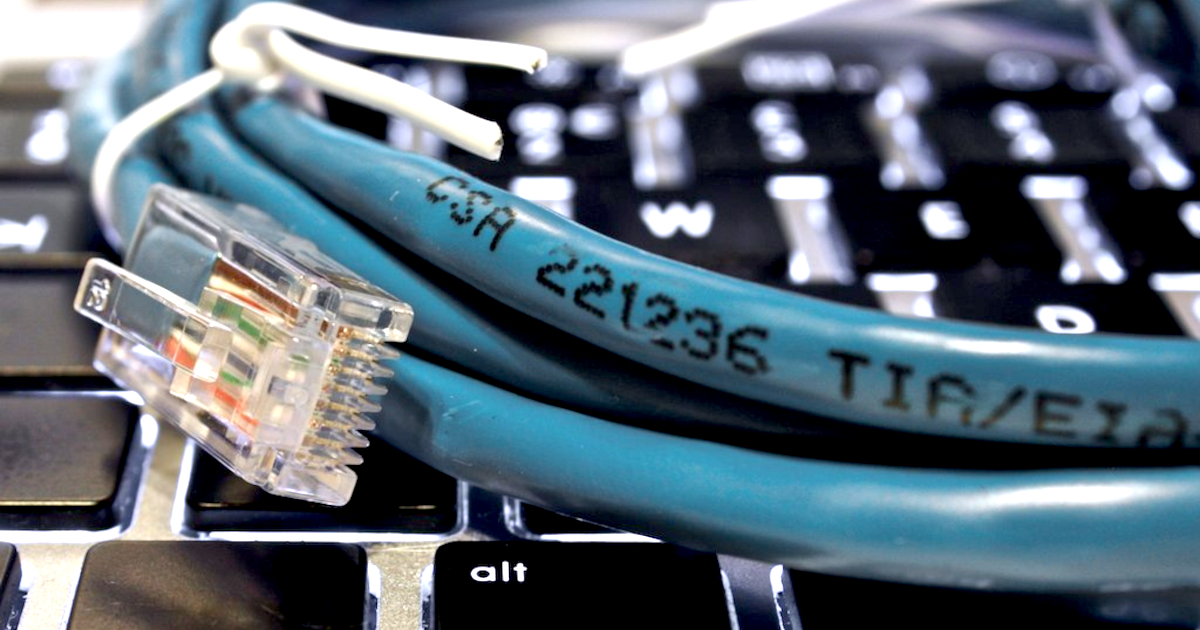Best Internet Plans and Discounts for Students
Apr 9, 2024 | Share
Brand Guides
-
Best for availability
- Overall rating: 3.7*
- No modem fee
- Discounts on mobile plans
- Extra WiFi charge
-
Best for cable speed
- Overall rating: 3.9*
- Wide plan selection
- Cool perks
- Data caps
-
Best for fiber prices
- Overall rating: 3.5*
- Unlimited data
- Cheap fiber plans
- Limited fiber availability
*Based on a five (5) point system used in our annual customer satisfaction survey.
Students rely on the internet now more than ever, so having a good internet connection is essential to their daily routine. Students need a connection that’s fast, reliable, and affordable.
Summer break will end before you know it, so now is an excellent time to find the best internet deals for students. But the search is no simple task, so we’re here to help you track down the best plans, discounts, bundles, and special offers for students.
Enter your zip code to see what’s available in your area.
Government internet plans for students
The government offers programs for students to help them get internet service. These programs apply to different people in different situations and work with different internet service providers (ISPs). You may qualify for multiple programs for discounted internet, depending on your income and other government programs you use. Here’s the list:
Lifeline
Lifeline is a program provided by the Federal Communications Commission (FCC) to lower the cost of telephone service, internet service, or a combination of both for low-income households. Qualifying families can receive up to $9.25 in monthly discounts for one service or bundle only.
To qualify, households must have an income that is 135% or below the Federal Poverty Guidelines or participate in federal programs like the Supplemental Nutrition Assistance Program (SNAP), Medicaid, and Federal Public Housing Assistance.
Use the National Verifier application system to see if you qualify for this program.
Enhanced Tribal Benefit
This version of Lifeline is for low-income households on Tribal lands. Families can receive a discount of up to $34.25 per month and up to a $100 discount on first-time installment fees. Use the National Verifier application system to see if you qualify.
Affordable Connectivity Program
The Affordable Connectivity Program (ACP) subsidizes monthly internet bills for low-income families. Qualified households receive a discount of up to $30 per month toward their internet bill. Households on Tribal land or in high-cost areas may be eligible for enhanced support of up to $75 per month.
To qualify, one household member must be enrolled in specific social programs (Lifeline, SNAP, WIC, National School Lunch Program, and others)—or a member can qualify based on income.
The ACP went into effect on December 31, 2021. It replaces the Emergency Broadband Benefit (EBB) program initially created to help those dealing with the effects of the COVID-19 pandemic.
Here are ACP-specific pages made available to you by many major internet providers:
Connect2Compete
EveryoneOn started as a public awareness campaign in 2012. Now it’s a national nonprofit working with internet providers to connect homes to low-cost internet and furnish affordable devices, like tablets and computers, to qualifying homes to use.
EveryoneOn’s Find Offers tool helps you locate ACP-based low-cost internet and devices in your area. Just enter your zip code.
EveryoneOn also kickstarted the Connect2Compete (C2C) initiative to provide affordable internet services to low-income homes with K-12 students. Cox and Mediacom still participate in the program, with pricing typically around $10 to $20 per month.
Internet provider discounts for students
Many internet providers also offer programs designed to help students. Here are five:
Xfinity student discounts
Xfinity is one of the largest cable internet providers in the US. It offers exclusive deals to students attending specific colleges and universities.
Xfinity’s off-campus student deals start at $55 per month for the most basic plan. Xfinity is very upfront about its student offers and has a much wider selection than most other ISPs.
Be aware that Xfinity’s regular rates apply once the promotional period ends. These deals also require a one-year commitment, so be sure to factor that into your budget.
If you’re an on-campus student, Xfinity on Campus is exclusive to dorms and other on-campus housing.
Internet Essentials
Finally, Xfinity provides an Internet Essentials program for students. This program supplies access to Xfinity Wi-Fi Hotspots, a free wireless gateway, and cable internet. Here are Xfinity’s two plans:
- Essentials – 50Mbps download, 10Mbps upload internet @ $9.95/mo. plus tax
- Essentials Plus – 100Mbps download, 20Mbps upload internet @ $29.95/mo. plus tax
Approved students can also purchase a computer for $149.99 plus tax.
Students must be eligible for public assistance programs (NSLP, Medicaid, SNAP, and so on) to qualify for Xfinity’s program. To apply, complete Xfinity’s online form (optimized for mobile).
See Xfinity Student DealsSpectrum student discounts
Spectrum quietly offers the Internet Assist plan with speeds up to 50Mbps for $24.99 per month. You receive free antivirus software, unlimited access to Spectrum’s nationwide hotspots, and a rent-free modem.
Spectrum also offers the Internet 100 plan for households eligible for the Affordable Connectivity Program. It costs $29.99 per month for 24 months, but customers are essentially reimbursed by the program’s $30 monthly credit, making this internet service free.
If you need mobile service, Spectrum One combines internet, Advanced WiFi, and one line of unlimited mobile data starting at $49.98 per month. All Spectrum One combos are eligible for the Affordable Connectivity Program.
See Spectrum Student DealsFrontier student internet plans
Frontier offers something for every kind of student , from grad students to homeschooled K–12 kids.
Frontier gives you a lot of options. If you need a plan with high upload speeds, it’s got that. If you need Wi-Fi to study on the go, it’s got that. Just need a ton of bandwidth to keep all your roommates happy? It’s got that too.
An important thing to note is that Frontier’s discounts apply only for the first 12 months, which is a considerably shorter time than it takes to acquire a degree. It’s also not as widely available as Xfinity, so check to see if it’s available in your area first.
See Frontier Student DealsAT&T student internet programs
The Access from AT&T program provides a wireless gateway and internet access costing up to $30 per month. To qualify, households must meet one of the following:
- Participate in the Affordable Connectivity Program
- Participate in the Supplemental Nutrition Assistance Program (SNAP)
- Participate in the Supplemental Security Income (SSI) (California only)
- Participate in the National School Lunch Program
- Have a household income below 200% of federal poverty guidelines
Customers who qualify can get the following services for free:
- DSL service up to 100Mbps
- Fiber service up to 100Mbps
The gateway and installation are included at no extra cost to you.
Optimum discounts
The Optimum Advantage Internet program provides internet access to qualified households for $14.99 per month. The program includes a free modem and router, download speeds of up to 50Mbps, and unlimited data.
Qualified households must be eligible for the National School Lunch Program (NSLP) or Supplemental Security Income (ages 65 and older). Students must reside in New York City and attend public school.
For more information on government programs for students, check out our page on government programs for affordable internet.
Do any other internet providers offer student discounts?
Not all ISPs advertise student discounts. Call a sales representative to see if they have any discounts for qualified students—it never hurts to ask. If the ISP doesn’t have student-specific discounts, you might find another discount that works for your situation.
Are there any free internet options for students?
Certain government programs, such as the Lifeline program, can help low-income families cover their internet bills. The program doesn’t offer free internet, but it can cover some or all of your monthly internet bill costs when combined with other offers from ISPs. Read our guide to government programs for internet assistance to find out more.
Several companies offer completely free internet plans, such as NetZero and FreedomPop. The plans aren’t particularly fast, so while they might do in a pinch, they’re probably not a long-term solution for getting through your undergrad.
T-Mobile introduced Project 10Million in 2020, providing a free hotspot and free internet for households eligible for the National School Lunch Program or a similar government program. Students can use 100GB of data per year for five years without paying a dime. Parents can purchase an Android tablet, Windows laptop, or Chromebook through T-Mobile at a discount.
If you’re motivated, there are more ambitious ways of getting around your internet bill, such as constructing a community mesh network. Fortunately, college is an excellent place to make some innovative friends who can pitch in and help.
For more ideas, read more about how to get free internet.
Can I bundle student internet with TV?
Generally, most internet plans for students can’t bundle TV. If you want TV, make sure your plan explicitly includes it. Otherwise, you probably won’t be able to add TV to your discounted plan the way you would to a standard plan.
Xfinity offers student internet plans that include TV services . It also gives you access to shows via the Xfinity Stream app, which offers a rotating selection of television shows. Xfinity also has the X1 TV Box, giving you live TV access when adding to the student internet packages.
If the best internet plan for students doesn’t give you the option to add TV, you can still get a discount on TV through DISH. DISH provides a discount on satellite TV to students, and unlike most ISPs, DISH is available anywhere in the US. You can get discounted satellite TV if you have a place to install a satellite dish.
If Xfinity and DISH aren’t viable options, you may still be able to find great bundle deals from other providers without needing a student plan. We list the best TV and internet bundles from Optimum, Spectrum, and more.
What to look for in a student internet plan
While cost is often a major factor, make sure your chosen plan meets your educational needs. In the face of tight deadlines, a reliable internet connection is often even more important than a fast connection.
Many factors go into reliability, from disruptions that impact certain kinds of connections to the responsiveness of internet service providers (ISPs) when networks go down.
Pro Tip:
Check what customers say about internet provider reliability in our annual customer satisfaction report.
Even so, speed is still an important factor—especially if you’re sharing an internet plan with roommates.
An excellent first step in finding the right balance for your internet connection is identifying how you plan to use it. Here are some examples of how much internet speed you’ll need for everyday student internet activities:
| Activity | Recommended download speed | Recommended upload speed |
|---|---|---|
| General online studying/surfing | 1Mbps | 1Mbps |
| Watching lectures | 2.5Mbps | 2.5Mbps |
| Uploading/downloading a Word doc | 1Mbps | 1Mbps |
| Uploading/downloading a Git repository | 10Mbps | 10Mbps |
| Uploading/downloading HD video | 25Mbps | 25Mbps |
| Making a Zoom call | 1.5Mbps | 1.5Mbps |
Studying
Are you looking up information for an assignment or cramming for a test? Fortunately, even long nights full of web surfing don’t require a lot of speed or data. Web pages with text and images only have no issues on a 1Mbps connection. But if you watch a lot of videos, you’ll probably want download speeds closer to 5–25Mbps.
Watching lectures
You will need a reliable connection to watch lectures online. Streaming video can use a lot of download bandwidth, and to participate in the discussion, you’ll need a decent upload speed too. Software like Skype or Zoom will drop your call if your internet speed doesn’t meet the minimum speed requirement.
For example, Zoom can still run on a relatively slow connection, maintaining a 1080p video stream on just 2.5Mbps. But your call could drop if your speed falls below that threshold. A broadband connection usually doesn’t have this problem, but connections with high latency, like satellite internet, might have issues.
If available, use the voice-only option to improve your performance issues.
Uploading assignments
Cable and DSL internet connections can give you fast download speeds but don’t prioritize upload speeds the same way. Slow upload speeds are usually not a problem for tasks like web surfing or video streaming. But if you frequently upload files, get a fiber connection with equal upload and download speeds.
Depending on what you study, the connection speed you need for schoolwork could vary wildly. You can get by on a 1Mbps connection if most of your assignments are papers, but you might want a faster plan if you’re in a field like computer science and need to check and recheck a large codebase. A 10Mbps upload speed can make this an easy process.
If you study something like video production, uploading your big project could take all night, as even some faster types of internet, like cable, often have low upload speeds. Although you can get by with less speed, this can be very frustrating, so we suggest an upload speed of 25Mbps.
Are you uploading big files for school?
See if fiber internet is available near you so you can capitalize on symmetrical upload speeds.
Staying connected
Staying connected with friends and family is important when you’re living away from home.
You can usually get by on a 1.5–5Mbps connection when you use Skype, FaceTime, and Zoom. However, you might need a more reliable internet plan (switching from DSL to fiber, for example) or a plan with faster speeds if you experience spotty connections.
Do you use the internet for highly specialized tasks or to relax after a hard day? Find out how much speed you need.
Bottom line: Get Xfinity if it’s available in your area
If you’re a student looking for a cheap, reliable internet plan, look to Xfinity first if it’s in your area. It’s one of the most broadly available cable internet providers with explicit student discounts and a wide selection of offers, including bundles with TV.
If Xfinity isn’t available in your area or you want to see if there are better offers elsewhere, Frontier and Spectrum also advertise student discounts. Other ISPs might also offer a discount if you talk to an agent.
Finally, be sure to look at nonprofits and government programs. There are several programs for helping students connect to the internet and programs to get discounted PCs and laptops. You can even get discounted satellite TV through DISH.
Whether it’s your first year in the dorms, your last year of high school, or your seventh year of grad school, chances are there’s an internet deal that will fit your needs.
Enter your zip code below to see if Xfinity is available in your area.
Author - Peter Christiansen
Peter Christiansen writes about satellite internet, rural connectivity, livestreaming, and parental controls for HighSpeedInternet.com. Peter holds a PhD in communication from the University of Utah and has been working in tech for over 15 years as a computer programmer, game developer, filmmaker, and writer. His writing has been praised by outlets like Wired, Digital Humanities Now, and the New Statesman.
Editor - Cara Haynes
Cara Haynes has been editing and writing in the digital space for seven years, and she's edited all things internet for HighSpeedInternet.com for five years. She graduated with a BA in English and a minor in editing from Brigham Young University. When she's not editing, she makes tech accessible through her freelance writing for brands like Pluralsight. She believes no one should feel lost in internet land and that a good internet connection significantly extends your life span.





